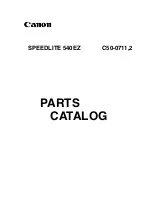
AM-1600GE / AB-1600GE
10
6.1.1
LUT (Cross Point Switch)
The LUT works as a cross-point switch which allows connecting inputs and outputs freely. The
signals LVAL_IN, FVAL_IN and EEN_IN all originate from the camera timing circuit.
On this diagram, “Trigger 0” is used for camera exposure and “Trigger 1” is used for Delayed
Readout. The “Time Stamp Reset” signal can reset the time stamp specified in GigE Vision
Format. This signal can be used when time stamps from several cameras connected are
coincident with each other. The “Sequence reset” resets the sequential settings. Outputs
from LUT described on the right side show GPIO settings for LINE SELECTOR in the JAI Camera
Control tool and inputs to LUT on the left side show GPIO settings for LINE SOURCE in the JAI
Camera Control tool.
Refer to Chapter 6.3
.
6.1.2
12-bit Counter
A camera pixel clock can be used as a source. The counter has a “Divide by N”, where N has
the range 1 through 4096, allowing a wide range of clock frequencies to be programmed.
Setting value 0 is bypass, setting value 1 is 1/2 dividing, and setting value 4095 is 1/4096
dividing. As the pixel clocks for the AM-1600GE and AB-1600GE are 30 MHz, the output
frequency is varied from 30MHz to 10.135 KHz.
6.1.3
Pulse Generators (0 to 1)
Each pulse generator consists of a 19-bit counter. The behavior of these signals is defined by
their pulse width, start point and end point.
The pulse generator signals can be set in either triggered or periodic mode.
In triggered mode, the pulse is triggered by the rising edge, falling edge, high level or low
level of the input signal. In periodic mode, the trigger continuously generates a signal that is
based on the configured pulse width, starting point and end point.
Each pulse generator operates at the frequency created in the 12-bit counter. As the pixel
clock (30 MHz) is used as the main frequency, the frequency of pulse generator is 30MHz to
10.135 KHz.
6.2
Opto-isolated Inputs/Outputs
The control interface of the C3 GigE Vision camera series has opto-isolated inputs and outputs,
providing galvanic separation between the camera's inputs/outputs and peripheral equipment.
In addition to galvanic separation, the opto-isolated inputs and outputs can cope with a wide
range of voltages; the voltage range for inputs is +3.3V to +24V DC whereas outputs will
5V to +24V DC.
Fig.7 Photo coupler
Summary of Contents for AB-1600GE
Page 69: ......
Page 70: ...Changes history Month Year Revision Contents 1 0 New issue...














































